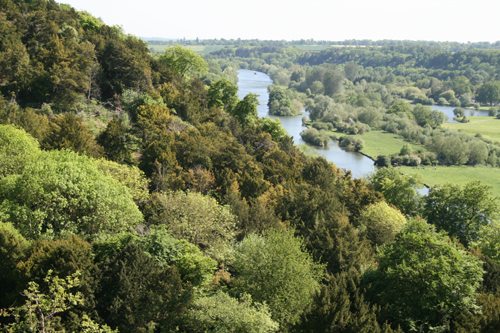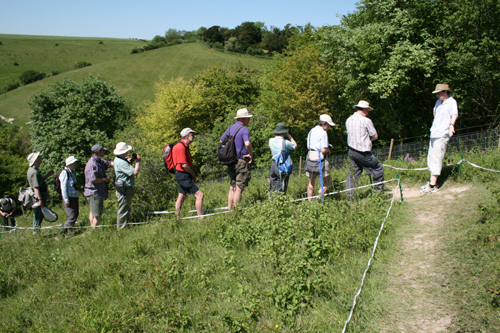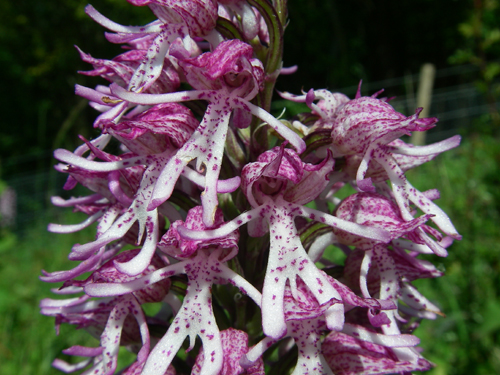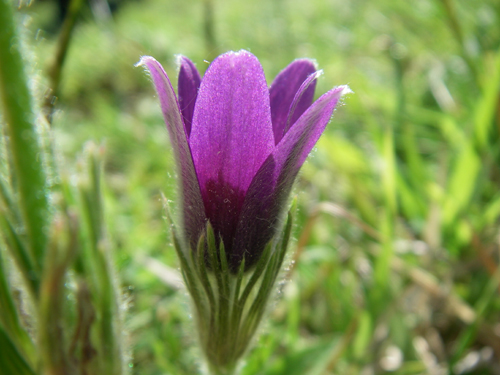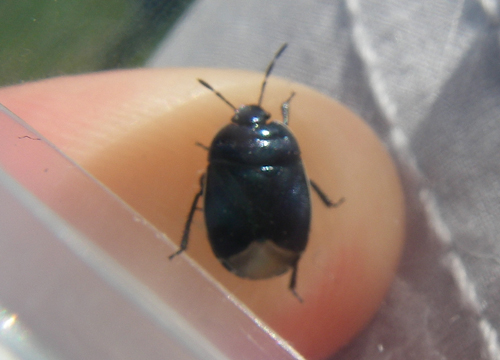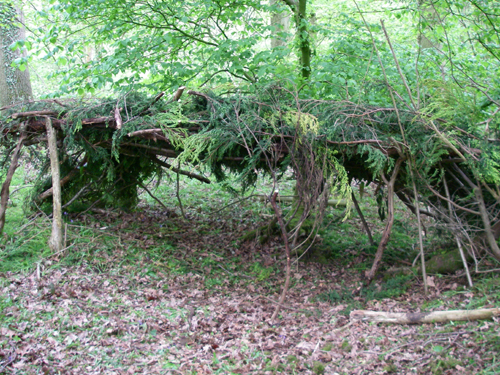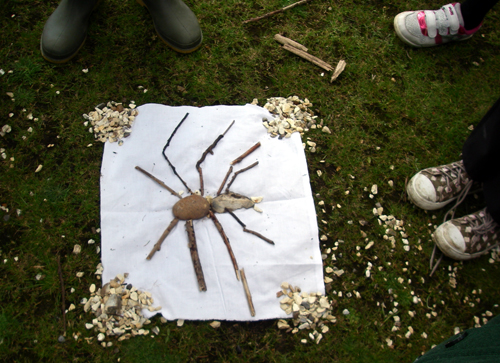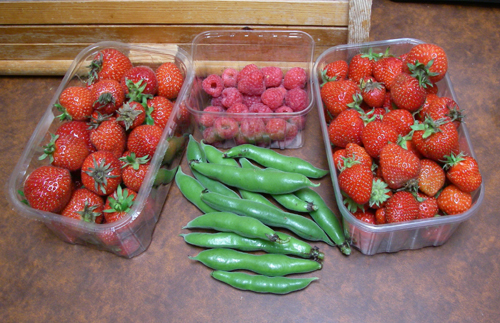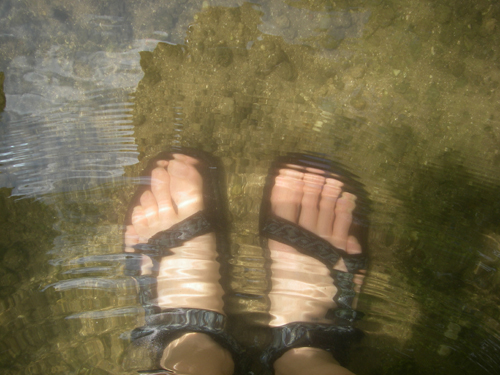I write this on a grey, showery first day of July, after what has been a largely grey, rainy June. It feels cool and windy and not at all like midsummer should be: working outdoors almost every day as I do, I feel slightly more entitled to whinge about the inclement weather than most folks. And reminding myself that “we need the rain” doesn’t actually help much. At the end of the day, I would prefer to be field teaching without having to garb myself up like a North Sea fisherman. Not to mention that 75% of the schoolchildren who turn up on field trips appear to be offspring of parents who haven’t had the nouse to put the words “outdoors” and “suitable clothing” together in their overtaxed brains. Here’s a clue, folks: in the real world coats have to be waterproof. All the Hello Kitty accessories in the world will not comfort your child if they are soaked to the skin on a five-hour school trip in the countryside.
If I sound a tad grumpy it’s because I’m not well: after being surrounded by schoolkids barking out coughs like sealions for the past month, I’ve succumbed to a tenacious virus that has left me teaching in a sultry croak that occasionally frightens younger children. Taking days off sick when you’re self employed is not really an option unless you have pneumonia, so I’m consuming epic quantities of garlic and fresh lemons and fortifying myself with echinacea and paracetamol. Being able to teach in dry weather would be helpful but the latest forecast seems to be continuing on the moist side… Heigh ho. Waterproofs at the ready.
In an effort to cheer myself up I’m posting some photos taken in late May and early June, before Britain entered the Rain Age. My friend Chris led a walk at Hartslock Nature Reserve near Goring, for Reading and District Natural History Society (RDNHS). It was a scorchingly hot day, and a lovely opportunity to revisit a nature reserve where I once lived for a few months in a caravan as the resident warden ‘guarding’ a colony of Monkey orchids (Orchis simia). The photo at the start of this blog is of Hartslock Woods, looking east down the River Thames. If you don’t know this site (which is owned and managed by local wildlife trust BBOWT) then I highly recommend you visit it: it’s fabulous for plants, invertebrates, birds and commands views over the Thames Valley and Goring Gap second to none.
RDNHS was founded in 1881 and is still going strong: the group runs a programme of outdoor visits to sites of wildlife interest and indoor talks about subjects ranging from earthworms to bird conservation in Ecuador. I don’t get along to their meetings as often as I’d like (especially at the moment, as I’m teaching six days a week and several evenings too), but I can thoroughly recommend them. Not only do you get a fascinating look at the natural world, but you meet some phenomenally accomplished amateur and professional naturalists who will generously share their knowledge with you. A list of their upcoming outdoor trips (on midweek evenings as well as Saturdays and Sundays) can be found on their website.
The Monkey orchid (Orchis simia) pictured in close-up above is one plant that gives Hartslock its botanical cachet. In 2002 a Lady orchid (Orchis purpurea) flowered at the site, and by 2006 the first Monkey-Lady hybrid Orchis simia x purpurea was seen in flower on the reserve. Now there is a thriving colony of 250+ hybrids alongside the existing Monkey orchids on the main orchid slope, and there has (and continues to be) lively debate about the pros and cons of hybridisation. My take on it is that ‘hybrid vigour’ (check out the sturdier-looking hybrid plant below) may well prove to be a healthy thing for the Monkey orchids long term… And that Mother Nature generally knows best and gets on with sorting things out, regardless of what opinions we puny humans may have. For more background info on the science behind the hybrids, check out Chris’s Hartslock website.
Being an unimproved chalk downland reserve, Hartslock is generally fantastic not just for orchids but all kinds of plant species. There is a small colony of (introduced) Pasqueflower Pulsatilla vulgaris, of which one was still in bloom in late May.
Another notable at Hartslock is the semi-parasitic Bastard toadflax Thesium humifusum, a tiny creeping little plant that taps into the roots of other plants and derives some of its sustenance from them. It reminds me of a diminutive mistletoe, although confusingly it is part of the Sandalwood family. There is a bug Sehirus impressus that feeds solely on the sap of this rare plant. We found one of these small dark metallic blue bugs on our ramble: my photo doesn’t do it justice as it was so warm the bug was practically break-dancing in its pot, but never mind.
After several hours in the scorchio sun my water supplies had run out and I was ready to call it a day… But not the stalwarts of RDNHS, who gamely set off on a foray to inspect the neighbouring slope for botanical and entomological gems. My ambition for my twilight years is still to be actively enjoying nature, so those more senior members of RDNHS are an inspiration. I salute them! Those of us who work in conservation owe a massive debt to such passionate and thorough amateur naturalists who have amassed a huge body of painstaking observations of our native wild plants and animals.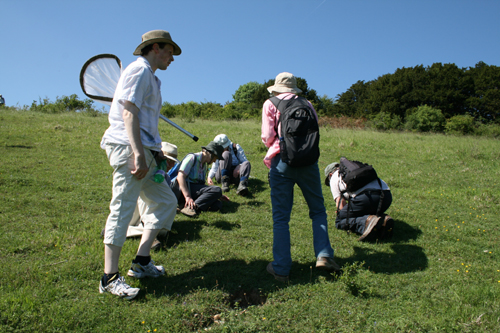
From the older generation to the younger… It is peak season for field teaching and I have been very busy working with schools and youth groups at Rushall Farm, Five A Day Market Garden and the RSPB’s Living Classroom at Thatcham. Schools often prefer to schedule their field trips for the summer term, although to be honest they could have just as good a day out in spring or autumn – or even winter for some study topics.
At Rushall Farm schools come on residential camps as well as day trips, which gives us a chance to do more adventurous things such as campfires, bivouac building and team building activities such as sheep herding. I’m telling you now, if you haven’t seen a class of eleven year-olds trying to get half a dozen confused sheep into a pen, you haven’t lived. I haven’t laughed so much in ages. One pupil related to their parent that they’d been “sheep hurdling”: that pretty much covers it. And the bivouacs that the kids build in the woods are works of art. Maybe not always 100% weatherproof, but creative marvels nonetheless. Ray Mears, eat your heart out.
What I like about the camps at Rushall is that you get to know the children over a couple of days and build up a rapport with them. Too often when classes come on trips there are worksheets to be done and curriculum topics to be covered: all worthy stuff and part of what outdoor education is about, but for me the real point to it all is making sure these kids develop a strong and lasting connection with the natural world that will sustain them throughout their lives. There’s a lot of talk these days about Nature Deficit Disorder and the lack of contact that most children (and adults) have with nature, so it’s easy to feel despondent… But what I see when I’m field teaching is children quickly getting into the wild experience, especially if there are ‘real’ things such as mud, sticks or campfires involved. The only things holding kids back seem to be adult fears about risks (not a problem if you plan things properly and set boundaries with groups) or getting clothes dirty (leave the designer gear at home). No-one will be able to see your designer labels once they’re muddy, anyway – and tribal facepaint (as modelled by me below after a bivouac building session at Rushall) beats Bourjois make-up any day.
It has been challenging teaching on some of these really wet days, but to give the kids credit, I haven’t heard a single one moan about the rain – even when they’ve been sent to us with insufficient footwear or rainproof clothing and have consequently spent the day somewhat damp. I’ve loaned a lot of clothing to kids in the last month in an effort to keep them at least partly dry: my feeling is that maybe instead of twittering on about reviving O-levels and getting kids to learn poetry by rote, Mr Gove should ensure that all schools have a set of wet weather gear that can be borrowed by kids going on field trips. Why should kids suffer because their parents are apparently clueless about what constitutes ‘appropriate clothing’ for a country where rain is the norm at the moment?
Getting off my soapbox… Despite the wet weather, I’ve had some great days out with school groups. Hunting for minibeasts, pond dipping and going on sensory nature walks are still crowd-pleasers. And even when I’ve had a gruelling day with a ‘challenging’ group, the things the kids come out with when I ask them what they remember about the day never fail to lift my spirits. No-one works in environmental education for the financial rewards, and teaching of any sort is at best demanding and at worst exhausting, but when I think of all the thousands of children I’ve worked with it feels worthwhile. I know what a positive impact my early nature education experiences had on me at primary school, and how that’s sustained me in later life. I just hope that some of what I do will have a similar effect on the children I teach.
Since the rainy season began and I became temporary host to the World’s Most Persistent Cough, I’ve not had much time to garden on the allotment that I share with my friend Tessa. Last time I visited (over a week ago) the blackfly were taking over the broad beans and I spent an unpleasant half hour dealing with them, as well as weeding like a fiend. However there has been just enough sun to ripen our strawberries so this weekend we picked four punnets, as well as some early raspberries and a few broad beans. It’s been a weird year for gardening so we’re not getting too bothered about our lack of produce so far. Everything looked very pale and washed out (literally) until very recently, but now hopefully things will get growing if we get a few warmer days. I planted some climbing French beans that a friend of mine gave me seeds of: an heirloom variety called O’Driscoll, which you can leave the pods on to grow large and then harvest the bean seeds for drying and using as a cooked pulse. I’m looking forward to sampling them later this year.
One other nice thing I did on one of the few sunny Sundays we’ve had was to go for a bike ride along the canal towpath to Kintbury. It was hot day and I was very glad to break my journey near the wonderfully-named wet woodland called The Wilderness, and go for a wade in the River Kennet (which runs parallel to the Kennet and Avon Canal at this point).
The river was crystal clear and beautifully cool and I spent a very pleasant half hour paddling about in it, spotting fish and botanising along the banks. The Kennet is a superb chalk stream, despite worries about its falling water levels. On the Action for the River Kennet (ARK) website you can find a lot of information about its current problems and wonderful wildlife. Simply put, we’re using too much water: ARK states that Thames Water abstracts 19 million litres of water per day from the aquifers that should be feeding the Upper Kennet. With all the rain we’ve had it may be hard to imagine that lack of water is still an issue, but it is. Leaks from water company infrastructure are definitely a factor, but that doesn’t mean that as individuals we shouldn’t also take steps to conserve water in our homes and gardens. My personal favourite tip is: Turn off the tap whilst brushing your teeth. This saves about 12 litres of water per person, every day. If everyone in Berkshire did this, it would save over 10 million litres of water per day… Which is over half of the water currently being taken out of those aquifers.
Time for me to go and pack my bag for another day’s field teaching on the morrow, so I’ll end this blog entry here. The forecast is for heavy rain and we have a large school group booked in at Thatcham so no doubt that will be interesting! But on the plus side we’re finding lots of groovy snails and slugs on our minibeast hunts… And frogs in the meadow. I will leave you with a picture of one the kids found last week, whilst sweep netting for insects. They were thrilled, the frog less so. It may be tough sometimes being a field teacher in the rain, but it’s even tougher being an amphibian who lives in area used regularly for environmental education. I suspect we’ll be seeing the same frog more than once before the end of term.

